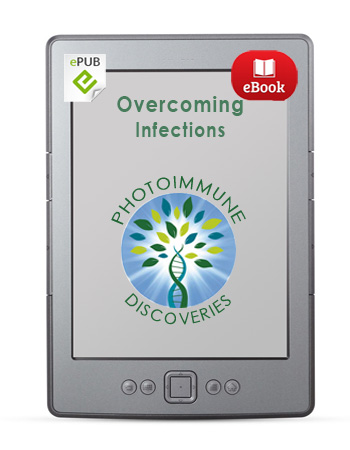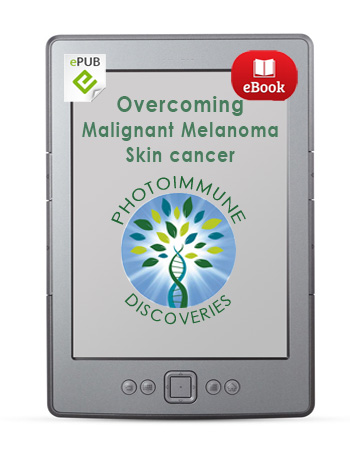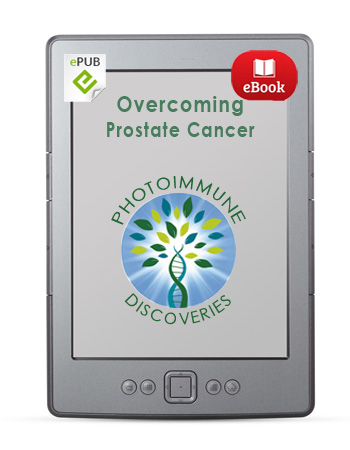Description
Overcoming Infectious Diseases
The Promise of Photodynamic Therapy and Other Innovative Treatment Options for Infectious Diseases
The human body harbors approximately 100 trillion microbes, and the number of single-celled organisms within the body outnumbers our body’s cells by 10 to one. However, some microbes can cause diseases in humans. How these infectious diseases and are successfully treated is the focus of Overcoming Infectious Disease: The Promise of Photodynamic Therapy and Other Innovative Therapies.
This ebook highlights a new approach to the treatment and management of infections, one rooted in the astounding therapeutic potential of Photomedicine (light-based medicine). Though the healing applications of light date back many centuries, it is only within the past few decades that high-tech developments in laser technology have enabled the medical profession to realize the true healing potential of light.
Overcoming Periodontal Disease is divided into four parts: (1) Understanding and Treating Infectious Disease; (2) The Photomedical Approach to Infectious Disease; (3) Promising Research Directions; and (4) Lifestyle Factors for Long-Term Control of Infections.
Part 1 provides an overview of infectious disease, beginning with an introduction to the four basic types of infection: (1) viral infections, (2) fungal infections, (3) parasitic infections, and (4) bacterial infections. Special attention is given here to the global problem of antibiotic resistance. Antibiotic-resistant bacteria do not completely respond to antibiotic treatments, and this results in prolonged illness and a heightened risk of death. A classic example is the Methicillin-resistant Staphylococcus aureus (MRSA) infection, which is caused by a strain of staph bacteria that’s become resistant to the antibiotics. This infection steals away the lives of many thousands of hospitalized patients every year.
In response to the growing crisis in the medical system’s approach to infectious diseases, the scientific community has been exploring various alternatives in earnest. The approach known as photodynamic therapy, or PDT, represents a key treatment option that is now garnering serious consideration by medical and public health scientists alike (see Part 2).
Here’s an excerpt from the ebook:
“PDT was discovered over one hundred years ago by observing the killing of microscopic organisms (paramecia) when harmless dyes and visible light were combined. Since then, PDT has mainly been developed as a treatment for cancer, eye disorders, and skin conditions. In the past two decades, however, scientific interest in the antimicrobial effects of PDT has been renewed, and it has been embraced as a valid treatment option for a wide variety of infectious conditions, though mainly those that are localized to specific areas of the body. Much of this renewed interest has been driven by the relentless increase in drug resistance amongst many groups of bacteria and other pathogens.
“Many studies have demonstrated that PDT can destroy bacterial cells in cell culture or test tube conditions. Nevertheless, in order for antimicrobial PDT to serve as a viable therapeutic tool, it must be shown that the photosensitizer and light are able to effectively kill microbes within actual living organisms. Animal studies have played a salient role in this regard, and numerous studies have demonstrated the effects of PDT on the prevention and treatment of infectious diseases, utilizing various animal models of infection (e.g., mouse, rat, dog, pig, and rabbit). Animals are used as models of disease in order to establish an infection that mimics the disease actually seen in humans. By duplicating as closely as possible the human infectious situation, animal studies have enabled investigation of the factors that drive infections, and thus the development of new treatments.
“Ultimately, of course, it is in the domain of clinical research that PDT has proven itself most useful. The first reports of the photodynamic inactivation (PDI) of viruses appeared in 1928, long before the development of antiviral drugs; however, the first clinical trial of PDI in humans (the topical treatment of herpes) did not take place until the early 1970s.
“PDT is well suited for treating a wide range of infectious diseases (a number of which will be discussed in the following sections). Many clinical applications of antimicrobial PDT involve the use of a topical cream containing 5-aminolevulinic acid (5-ALA), or more recently the ALA-methyl ester known as methyl aminolevulinate (MAL). Most of these applications have involved localized infections on the skin. Treatment with either 5-ALA or MAL leads to the accumulation of the photosensitizer Pp-IX in living cells within the body. Some of ALA-PDT’s success in treating skin infections is certainly due to killing the actual microorganisms responsible for the infection; however, it is unclear to what extent ALA-PDT also kills the host cells or tissues that are harboring the infectious microbes.”
This is followed by detailed summaries of the evidence for using PDT against a range of viral, bacterial, parasitic, and fungal infections. Light-based methods could also provide the most powerful countermeasure against the biological weaponry involved in bioterrorism and biowarfare. But of course, it is the peacetime application of Photomedicine that is more urgently needed, especialy when it comes to knocking out deadly MRSA infections.
Part 3 examines promising research directions for further enhancing the efficacy of PDT for infectious disease, with an emphasis on immunotherapy. Part 4 of the ebook explores some of the practical dietary and lifestyle practices that are needed to further bolster immunity against infections. In addition to immune-enhancing nutrition and regular exercise, taking steps to reduce psychological stress can further reinforce the benefits of the immune-enhancing lifestyle.
The ebook’s appendix includes a special discussion about two light-sensitizing substances, a dietary supplement called Bremachlorophyll, and a unique medicine called Bremachlorin. Because of its diverse effects against infections, Bremachlorin-PDT is likely to revolutionize the way Photomedicine is incorporated into modern treatment of infectious diseases.






 English
English Français
Français Deutsch
Deutsch Nederlands
Nederlands